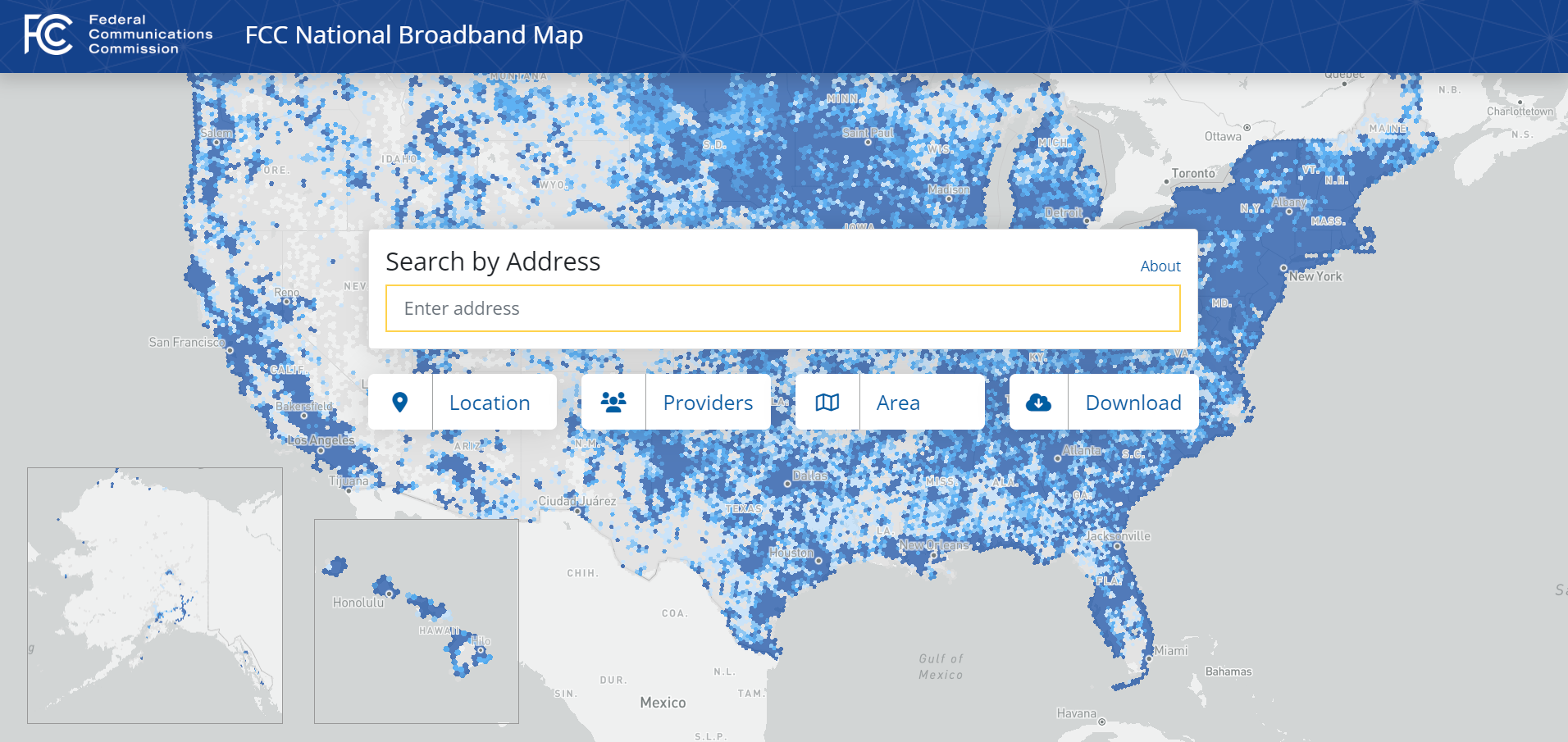
The FCC has a new map showing where internet service is – and is not – available across the country, down to the location level. The map shows fixed and mobile broadband availability data submitted by internet service providers through the Commission’s Broadband Data Collection (BDC). The release of the Broadband Map, which provides the most comprehensive, granular and standardized data the Commission has ever made available on broadband availability, is an important milestone in implementing the Broadband DATA Act.[1]
The Broadband Map is available at https://broadbandmap.fcc.gov, and displays where fixed and mobile internet services are available across the United States as of June 30, 2022. The foundation for the location-level data on fixed broadband availability – the individual points on the map – is the Commission’s Fabric dataset, which includes the buildings or structures – such as a home, apartment building, or small business building – where internet service is, or could be, available.
View FCC National Broadband MapChallenging the Data
The $42.45 billion Broadband Equity, Access, and Deployment (BEAD) program within the Department of Commerce’s National Telecommunications and Information Administration (NTIA) will allocate funding to each State based on its proportion of unserved areas based on the new map.
The FCC is encouraging all interested parties, including states, communities, to submit challenges by January 13th, 2023. NTIA also pledged that it will release the State allocations of the broadband funding from the bipartisan infrastructure bill by June 30th. Here’s a video tutorial and more information on how to submit challenges.
Additional Resource
- FCC National Broadband Map Fact Sheet
https://www.fcc.gov/document/national-broadband-map-fact-sheet
Reference
[1] Broadband Deployment Accuracy and Technology Availability Act, Pub. L. No. 116-130, 134 Stat. 228 (2020) (codified at 47 U.S.C. §§ 641-646) (Broadband DATA Act); see 47 U.S.C. § 642(c) (instructing the Commission to create maps showing the extent of the availability of broadband internet access service in the United States).





